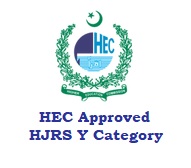Understanding the pavement project failures in Pakistan: identifying causes and solutions
DOI:
https://doi.org/10.47264/idea.nasij/5.1.5Keywords:
Pavement project, Pavement failure, Highway infrastructure, Project failure, Road deterioration, Road infrastructure, Road development, Road degradationAbstract
Pavement deterioration is a major issue in Pakistan's road and highway infrastructure. The current study attempts to clarify the most important factors of road degradation in Pakistan using a questionnaire prepared and distributed to engineers, contractors, architects, surveyors, and project managers involved in road development and upkeep. The study had 147 replies. This data was collected from employees from various road construction sectors in Pakistan. Convenience sampling, a sort of non-probability sampling, is used for data gathering due to time and resource constraints. The data were analysed through SPSS and Microsoft Excel. The responses were gathered using a 10-point Likert scale. The standard (inadequate density in surface or sub-base) has the maximum rank of 9.1, while the lowest factor (use of naturally smooth uncrushed aggregate) is 2.0. Furthermore, the causes of deterioration were reorganised into eight consistent groups of pertinent causes. The first group (effect of traffic load and volume) has a severity level of 6.5, while the last group (effect of bond between layers) ranks 3.22 in group comparison. The study is helpful in identifying the causes of road deterioration in Pakistan and avoiding or mitigating their effects during design, construction, and maintenance through operation.
References
Alaamri, R. S. N., Kattiparuthi, R. A., & Koya, A. M. (2017). Evaluation of flexible pavement failures-a case study on IZKi Road. International Journal of Advanced Engineering, Management and Science, 3(7), 741–749. https://doi.org/10.24001/ijaems.3.7.6
Bhargava, N., Siddagangaiah, A. K., & Ryntathiang, T. L. (2019). State of the art review on design and performance of microsurfacing. Road Materials and Pavement Design, 21(8), 2091–2125. https://doi.org/10.1080/14680629.2019.1607771
Carlson, P. J., Park, E. S., & Andersen, C. (2009). Benefits of pavement markings. Transportation Research Record, 2107(1), 59–68. https://doi.org/10.3141/2107-06
Chhabra, R. S., & Marik, S. (2014). A review literature on the use of waste plastics and waste rubber tyres in pavement. International Journal of Core Engineering & Management (IJCEM), 1(1), 1-5. http://www.hindex.org/2014/p442.pdf
Deme, D. (2020). A review on effect of pavement surface failure on road traffic accident. Journal of Advancement in Engineering and Technology, 7(3), 1-4. https://doi.org/10.5281/zenodo.3754298
Elseifi, M. A., Baek, J., & Dhakal, N. (2018). Review of modelling crack initiation and propagation in flexible pavements using the finite element method. International Journal of Pavement Engineering, 19(3), 251–263. https://doi.org/10.1080/10298436.2017.1345555
Ghasia, M. A., Shah, Y. U., & Rotte, V. M. (2019). A critical review on evaluation of pavement drainage systems. In Lecture Notes in Civil Engineering (pp. 93–101). https://doi.org/10.1007/978-981-13-6701-4_5
Grošek, J., Zav?el, T., & Stryk, J. (2021). Mitigation possibilities of concrete pavement degradation. IOP Conference Series: Materials Science and Engineering, 1039(1), 012018. https://doi.org/10.1088/1757-899x/1039/1/012018
Gupta, A., Kumar, P., & Rastogi, R. G. (2011). Pavement deterioration and maintenance model for low volume roads. International Journal of Pavement Research and Technology, 4(4), 195–202. https://doi.org/10.6135/ijprt.org.tw/2011.4(4).195
Gurule, A., Ahire, T., Ghodke, A., Mujumdar, N. P., & Ahire, G. D. (2022). Investigation on causes of pavement failure and its remedial measures. International Journal for Research in Applied Science and Engineering Technology, 10(5), 2786–2788. https://doi.org/10.22214/ijraset.2022.42934
Ikechukwu, A. F., & Hassan, M. M. (2021). Assessing the extent of pavement deterioration caused by subgrade volumetric movement through moisture infiltration. International Journal of Pavement Research and Technology, 15(3), 676–692. https://doi.org/10.1007/s42947-021-00044-y
Jemberie, M. A., Melesse, A. M., & Abate, B. (2023). Urban Drainage: The Challenges and Failure Assessment using AHP, Addis Ababa, Ethiopia. Water, 15(5), 957. https://doi.org/10.3390/w15050957
Jian, W., Huang, Y., & Sha, A. (2018). A review of eco-friendly functional road materials. Construction and Building Materials, 191, 1082–1092. https://doi.org/10.1016/j.conbuildmat.2018.10.082
Jichkar, R. (2021). Review Paper on Defects in rigid pavement. International Journal for Research in Applied Science and Engineering Technology, 9(VI), 1288–1290. https://doi.org/10.22214/ijraset.2021.35206
Jones, C., Ramanathan, S., Suraneni, P., & Hale, W. (2020). Calcium oxychloride: A critical review of the literature surrounding the formation, deterioration, testing procedures, and recommended mitigation techniques. Cement and Concrete Composites, 113, 103663. https://doi.org/10.1016/j.cemconcomp.2020.103663
Khan, S. S., & Khan, F. (2020). Flexible pavements deterioration and solutions. International Journal of Advance Research, Ideas and Innovations in Technology, 6(3), 468–470. https://www.ijariit.com/manuscript/flexible-pavements-deterioration-and-solutions/
Kodikara, J., Islam, T., & Sounthararajah, A. (2018). Review of soil compaction: History and recent developments. Transportation Geotechnics, 17, 24–34. https://doi.org/10.1016/j.trgeo.2018.09.006
Kodippily, S., Henning, T. F. P., & Ingham, J. (2012). Detecting flushing of thin-sprayed seal pavements using pavement management data. Journal of Transportation Engineering, 138(5), 665–673. https://doi.org/10.1061/(asce)te.1943-5436.0000354
Kulkarni, A. A. (2018). Construction practices and its effect on bond strength of pavements. Journal of Today’s Ideas Tomorrow’s Technologies, 6(2), 77–82. https://doi.org/10.15415/jotitt.2018.62006
Lamb, C. W., & Baker, J. (1993). The case method of instruction: Student-Led presentations and videotaping. Marketing Education Review, 3(1), 44–50. https://doi.org/10.1080/10528008.1993.11488397
Lee, S. H., & Yoo, I. K. (2008). Overview of Pavement Management System in Korea and Its Operation Results. In 25th International Symposium on Automation and Robotics in Construction. Vilnius Gediminas Technical University Publishing House “Technika,” Vilnius, Lithuania (pp. 355-364).
Leon, L. P., Ellis, L. A., Martin, H. H., & Fermin, B. (2023). Dominating factors of road failures: perceptions of key stakeholders in the small island developing state of Trinidad and Tobago. West Indian Journal of Engineering, 45(2), 68–76. https://doi.org/10.47412/mgbb4897
Lendra, L., Wibowo, M. A., & Hatmoko, J. U. D. (2020). Literature review on energy consumption in road construction projects. Journal of Physics: Conference Series, 1625(1), 012034. https://doi.org/10.1088/1742-6596/1625/1/012034
Luo, X., Wang, H. B., Cao, S., Jian, L., Yang, S., & Zhang, Y. (2023). A hybrid approach for fatigue life prediction of in-service asphalt pavement. Philosophical Transactions of the Royal Society, 381(2254). https://doi.org/10.1098/rsta.2022.0174
Mills, B., Tighe, S., Andrey, J., Smith, J., Parm, S., & Huen, K. (2007). Road well-travelled: implications of climate change for pavement infrastructure in Southern Canada. Transportation Association of Canada. https://trid.trb.org/view/859037
Moghe, A. B., Chavhan, J. R., Rathod, B. M., Gedam, D. S., Pawar, A. V., Ade, P. D., & Rathod, V. (2023). Study and analysis of highway failure and their maintenance. International Journal for Research in Applied Science and Engineering Technology, 11(10), 1370–1376. https://doi.org/10.22214/ijraset.2023.56151
Mohammad, L. N., & Saadeh, S. (2008). Performance evaluation of stabilized base and subbase material. Geo Congress. https://doi.org/10.1061/40971(310)134
Moriyoshi, A., Shibata, E., Natsuhara, M., Saito, K., Kondo, T., & Kasahara, A. (2021). Deterioration of modern concrete structures and asphalt pavements by respiratory action and trace quantities of organic matter. PLOS ONE, 16(5), e0249761. https://doi.org/10.1371/journal.pone.0249761
Mugume, M. R., & Kakoto, D. (2020). Effect of inappropriate binder grade selection on initiation of asphalt pavement cracking. Sustainability, 12(15), 6099. https://doi.org/10.3390/su12156099
Omar, H. A., Yusoff, N. I. M., Mubaraki, M., & Ceylan, H. (2020). Effects of moisture damage on asphalt mixtures. Journal of Traffic and Transportation Engineering (English Edition), 7(5), 600–628. https://doi.org/10.1016/j.jtte.2020.07.001
Panchmatia, P., Olek, J., & Whiting, N. (2014). Joint deterioration in concrete pavements. In 4th International Conference on the Durability of Concrete Structures (pp. 12-21) https://doi.org/10.5703/1288284315377
Ramirez, L., Geary, M., Vandenbossche, J. M., Gatti, K. A., & Mu, F. (2011). Premature Deterioration of Jointed Plain Concrete Pavements. United States Department of Transportation. https://rosap.ntl.bts.gov/view/dot/20537
Rangaraju, P. R. (2002). Investigating premature deterioration of a concrete highway. Transportation Research Record, 1798(1), 1–7. https://doi.org/10.3141/1798-01
Riemer, C., & Pittenger, D. (2012). Modeling pavement texture deterioration as a Pavement Preservation Management System tool. Transportation Research Board 91st Annual Meeting Transportation Research Board. https://trid.trb.org/view/1128974
Roy, P. P. (2021). Study on rigid pavement analysis and design. International Journal for Research in Applied Science and Engineering Technology, 9(8), 1842–1850. https://doi.org/10.22214/ijraset.2021.37672
Salehi, S., Arashpour, M., Kodikara, J., & Guppy, R. (2021). Sustainable pavement construction: A systematic literature review of environmental and economic analysis of recycled materials. Journal of Cleaner Production, 313, 127936. https://doi.org/10.1016/j.jclepro.2021.127936
Sarsam, S. I. (2016). Pavement maintenance management system: a review. Trends in Transport Engineering and Applications, 3(2), 19-30. https://doi.org/10.3759/ttea.v3i2.2850
Schwartz, C. W., Christopher, B. R., & Tutumluer, E. (2016). Geotechnical aspects of pavements: there’s more to roads than asphalt and concrete. GEOSTRATA Magazine, 20(3), 44–50. https://doi.org/10.1061/geosek.0000335
Segundo, I. R., Freitas, E. F., Branco, V. T. F. C., Landi, S., Costa, M. F. M., & Carneiro, J. a. O. (2021). Review and analysis of advances in functionalized, smart, and multifunctional asphalt mixtures. Renewable & Sustainable Energy Reviews, 151, 111552. https://doi.org/10.1016/j.rser.2021.111552
Shahid, M. A. (2019). Maintenance management of pavements for expressways in Malaysia. IOP Conference Series: Materials Science and Engineering, 512, 012043. https://doi.org/10.1088/1757-899x/512/1/012043
Singh, A. K., & Sahoo, J. P. (2021). Rutting prediction models for flexible pavement structures: A review of historical and recent developments. Journal of Traffic and Transportation Engineering (English Edition), 8(3), 315–338. https://doi.org/10.1016/j.jtte.2021.04.003
Su, N., Xiao, F., Wang, J., & Amirkhanian, S. (2017). Characterizations of base and subbase layers for mechanistic-empirical pavement design. Construction and Building Materials, 152, 731–745. https://doi.org/10.1016/j.conbuildmat.2017.07.060
Sultana, M., Chai, G., Chowdhury, S. H., Martin, T., Anissimov, Y. G., & Rahman, A. (2018). Rutting and roughness of flood-affected pavements: literature review and deterioration models. Journal of Infrastructure Systems, 24(2). https://doi.org/10.1061/(asce)is.1943-555x.0000413
Tarawneh, S., & Sarireh, M. (2013). Causes of cracks and deterioration of pavement on highways in Jordan from contractors’ perspective. Civil and Environmental Research, 3(10), 16–26. https://iiste.org/Journals/index.php/CER/article/view/7718
Tran, T. N., Nguyen, H. N., Nguyen, K. S., & Nguyen, N. (2017). Semi-flexible material: the sustainable alternative for the use of conventional road materials in heavy-duty pavement. In Lecture Notes in Civil Engineering (pp. 552–559). https://doi.org/10.1007/978-981-10-6713-6_54
Walker, D. (2013). The importance of preserving pavements. Asphalt, 28(1). https://trid.trb.org/view/1314923
Wang, J., Xiao, F., Chen, Z., Li, X., & Amirkhanian, S. (2017). Application of tack coat in pavement engineering. Construction and Building Materials, 152, 856–871. https://doi.org/10.1016/j.conbuildmat.2017.07.056
Xiao, Y., Dong, Q., Chang, X., Cui, P., & Liu, G. (2021). Research hotspots and development trends on recycled construction materials in Pavement Engineering: a bibliometric evaluation. Materials, 14(9), 2170. https://doi.org/10.3390/ma14092170
Yang, K., & Li, R. (2021). Characterization of bonding property in asphalt pavement interlayer: a review. Journal of Traffic and Transportation Engineering (English Edition), 8(3), 374–387. https://doi.org/10.1016/j.jtte.2020.10.005
Zheng, J., You, Z., & Liu, X. (2020). Achievements and prospects of functional pavement: materials and structures. Applied Sciences, 10(21), 7720. https://doi.org/10.3390/app10217720
Zumrawi, M. M. E. (2015). Investigating causes of pavement deterioration in Khartoum State, Sudan. Journal of Civil and Environmental Engineering, 9(11), 1458–1463. https://publications.waset.org/10002917/investigating-causes-of-pavement-deterioration-in-khartoum-state-sudan
Downloads
Published
Issue
Section
License
Copyright (c) 2024 Shakir Iqbal, Hussain Ahmad Khan, Ihsan Ullah, Muhammad Waqas Khan, Sadaqat Hussain

This work is licensed under a Creative Commons Attribution 4.0 International License.
Please click here for details about the Licensing and Copyright policies of NASIJ.








